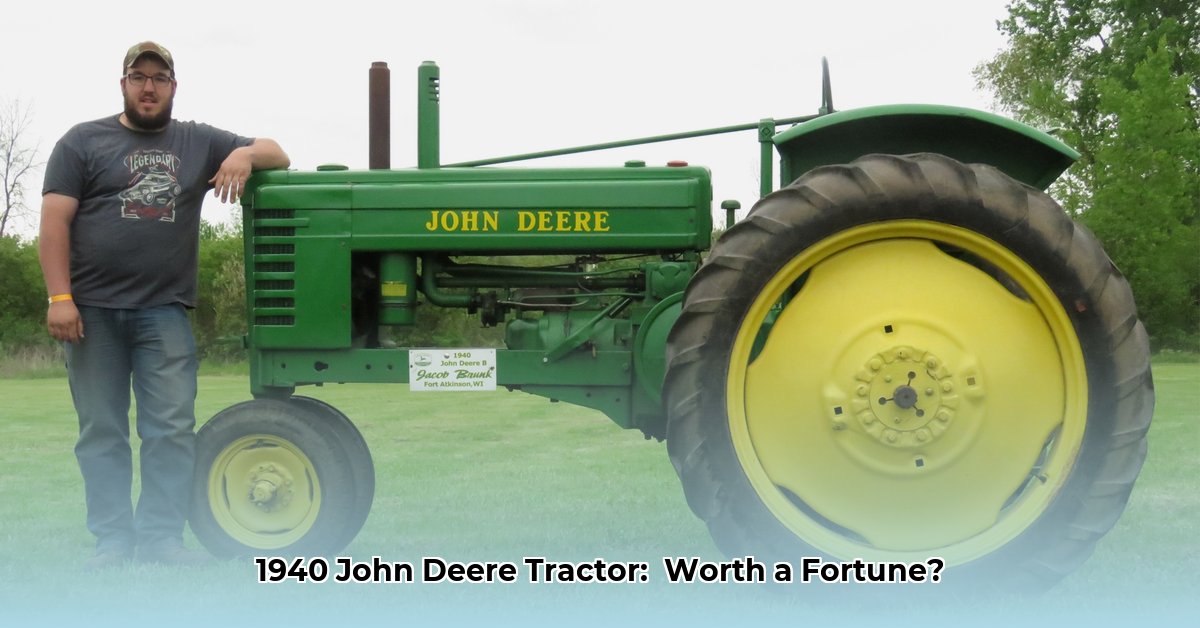
This comprehensive guide provides expert advice on buying, selling, and investing in the iconic 1940 John Deere B tractor. Whether you're a seasoned collector or a curious enthusiast, this resource will equip you with the knowledge to navigate this unique market successfully. For additional resources on John Deere equipment, check out this helpful site: John Deere resources.
Diving into the World of 1940 John Deere B Tractors
The 1940 John Deere B holds a special place in agricultural history. Its robust design and enduring legacy contribute to its popularity among collectors and enthusiasts. But the market for these classic tractors is diverse, with prices varying significantly. Why the vast price range (from a few hundred dollars to over seven thousand)? The answer lies in condition, features, and parts availability.
A fully restored tractor in pristine condition commands a premium price, mirroring the world of classic cars. Specific features like a functioning hydraulic system (a significant upgrade for its time) significantly enhance value. Furthermore, the readily available parts for a particular tractor directly impact its desirability and, consequently, its price. Isn't it fascinating how a machine from the 1940s still sparks so much interest today?
Buying Your Dream 1940 John Deere B: A Step-by-Step Approach
Ready to own a piece of history? Follow these steps to ensure a successful purchase:
Thorough Online Research: Begin by exploring online listings, comparing prices, and noting the condition, features (hydraulic systems are highly sought after), and seller location. This initial research establishes a realistic purchase price range.
In-Person Inspection: A hands-on inspection is critical. Carefully examine the engine, transmission, and hydraulics (if present). Don't hesitate to question the seller about its history, maintenance records, and any known issues.
Realistic Pricing: Online listings offer a baseline, but remember, condition is paramount. A restored tractor will command a significantly higher price than one needing extensive repairs. How do you determine fair market value? Analyzing comparable sales is key.
Budgeting for Restoration: Restoration can be costly and time-consuming. Consider your options: a DIY restoration saves money but requires expertise; professional restoration is faster but more expensive. Which is more financially feasible for you?
Securing Parts: Before purchase, research reliable parts suppliers. Knowing where to find parts for necessary repairs (or future maintenance) is essential for long-term ownership.
Authenticity Verification: Verify the tractor's authenticity. Cross-reference serial numbers with factory records and carefully review any accompanying documentation. Consulting an expert is always prudent.
Selling Your 1940 John Deere B: Maximizing Your Return
Preparing your tractor for sale strategically maximizes your return. Here's how:
Comprehensive Documentation: Meticulously document the tractor's condition with high-quality photos and a detailed written description. Transparency about its condition, restoration history, and any known issues builds buyer trust. What are the most important aspects to showcase to attract a buyer?
Strategic Sales Channels: Choose wisely. Options include online auction sites (like eBay), specialized antique tractor forums, and private sales. Each channel caters to a different buyer demographic. Which platform maximizes your reach to potential buyers?
Compelling Visuals: Professional-quality photographs are crucial. Showcase the tractor's best features. Couple this with a detailed description highlighting condition, history, and unique attributes.
Effective Negotiation: Be prepared to negotiate price, but know your tractor's worth based on your research. A confident approach yields the best outcome.
Market Overview: Risks and Rewards
Investing in a 1940 John Deere B tractor presents opportunities and inherent risks.
| Factor | Risk Level | Potential Impact | Mitigation Strategies |
|---|---|---|---|
| Parts Availability | Moderate | Significant | Research parts availability before purchase; establish relationships with reliable suppliers. |
| Restoration Costs | High | Substantial | Obtain multiple cost estimates; carefully weigh DIY vs. professional restoration. |
| Authenticity | Low | Moderate | Verify authenticity through documentation and expert consultation if necessary. |
| Market Fluctuations | Moderate | Moderate | Research historical market trends; consider your overall investment portfolio. |
Legal compliance is paramount. Adhere to relevant sales laws, tax regulations, and transportation rules. Accurate representation prevents legal issues down the line. Remember, thorough preparation and due diligence are key to success in this market. Careful planning and attention to detail allows for a profitable transaction for both buyers and sellers.